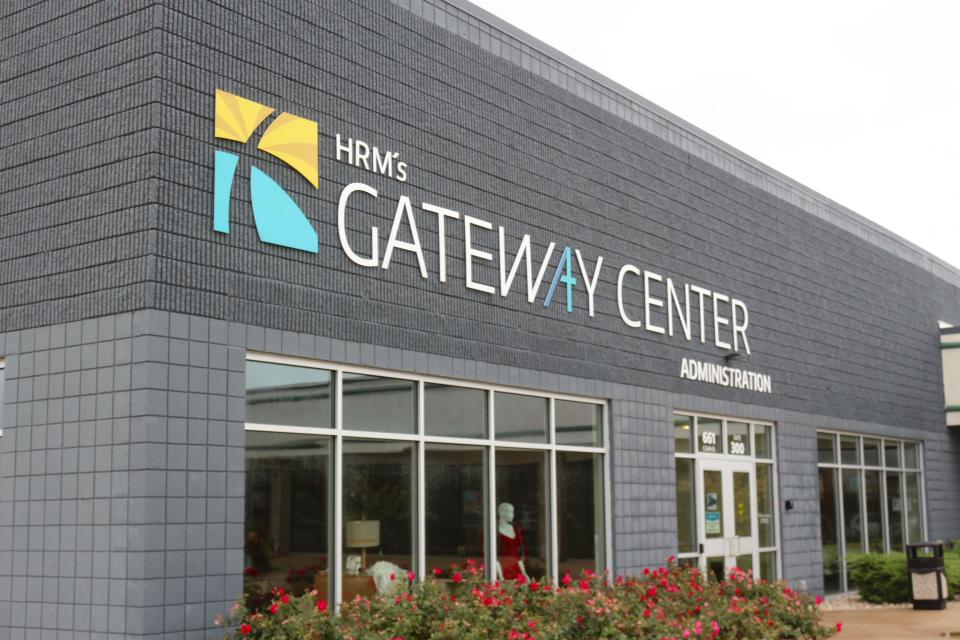Steve VanderVeen: The triumphant tale of Holland Rescue Mission
Nellie Churchford's mission was the mission.
During the summer of 1927, workers completed the Holland mission’s new home at 178 Central Ave. — opposite the Warm Friend Tavern. However, even with donated labor from bricklayers, carpenters and plasterers, the trustees — Nellie Churchford, Con DePree and August Landwehr — had to borrow $10,000 from First State Bank.
More:Holland's first female cleric didn't work quietly
More:Nathan Kenyon and Holland's banking history
More:Con DePree and DePree Chemical Company
The building’s dedication ceremony was, according to the Holland City News, one of the most impressive services “ever held in the city.” Rev. Clarence Dame opened the ceremony by saying the building was a gift to God and prayed God’s blessing would permanently rest upon it.
Then, attorney and politician Gerrit Diekema made the following points, among others: First, the event was one of the happiest moments of his life. Second, the building represented one of Holland’s greatest achievements, for it was dedicated “to the rescue of humanity from the evil one." Third, what the community had done spoke volumes “louder even than the voice of Nellie,” who on this day could only cry.
Diekema then introduced Con DePree, giving him credit for organizing the construction of the building. DePree, in turn, gave credit to Nellie and the workers who donated their time. More than 1,000 people attended.
That year, the town was also buzzing because Nellie had brought Paul Radar, the country’s first nationwide radio preacher, to town. For three weeks, Radar held revival meetings at the Holland Armory while he stayed at the Warm Friend Tavern and spoke positively about it during his broadcasts.

The following year, he returned and 2,000 people crammed themselves into the Armory to hear him on a Sunday evening. In between, Nellie brought in Homer Rodenheaver, famous song leader and trombonist for Billy Sunday. So successful were Nellie’s events that city leaders started planning for a 1,800-seat tabernacle.
Meanwhile, John DeBoer, an automobile dealer; John Yonker, owner of a plumbing and heating business; and Henry Zwemer, who worked at West Michigan Furniture, replaced Nellie’s worn-out Model T with a new Whippet, and the Vanderberg Brothers continued to provide free gas and service.
But catastrophic events contributed to slowing down the mission’s momentum, including the mental demise of trustee August Landwehr after a boating accident in 1928 took the life of his son, the stock market crash of 1929 and the Great Depression that followed, and the illness and death of Nellie Churchford in 1931.
SubscribeLearn more about our latest subscription offers!
Because the mission had been Nellie Churchford, it lacked a formal organizational structure. At first, the trustees considered selling the building to the Salvation Army, but the community seemed cold to the idea. Instead, they asked a local man, John Looman, to step in as director.
Then, in 1933, they asked Mel Trotter of the Grand Rapids City Mission to take over. Trotter formed a board, wrote bylaws and incorporated the Holland City Mission. The new board then put Mel’s brother, George, in charge.

But it wasn't enough. The mission defaulted on its $10,000 building loan, and First State Bank ended up selling the facility to the Salvation Army. The mission moved to a rented space at 51 E. Eighth Street.
In 1939, the mission purchased the building at 74 E. Eighth Street, which remained its home until 1984. Then, under the leadership of Ralph and Sandra Houston, it bought the office portion of the Holland Furniture Company at 166 S. River Ave. — then home to Holland’s Sears.
In 1992, the board named Darryl Bartlett as director. In 1996, the Holland City Mission became the Holland Rescue Mission. In 1997, the Holland Rescue Mission merged with the Muskegon mission. In 2000, to better serve women and children, the mission began building the Family Hope Ministry Center on Fairbanks Avenue.
In 2003, it opened its first thrift center. In 2008, it opened an Auto Training Center on River Avenue and began to offer work training and life-discipleship programs in addition to emergency assistance. In 2014, the mission opened Gateway Center at 24th Street and the U.S.-31. Then, in 2021, it became Gateway Mission.
The Salvation Army remained at 178 Central Ave. until 1963, when it moved to the vacated First Reformed Church building on Ninth Street and Central. Today, both buildings are gone.
Information for this article comes from Robert Swierenga’s "Holland, Michigan," The Holland City News, Randy Vande Water and Digital Holland.
This article originally appeared on The Holland Sentinel: Holland History: The triumphant tale of Holland Rescue Mission
